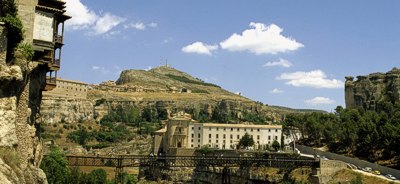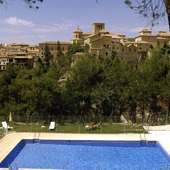
Cuenca - Castile-La Mancha – SpainCuenca is in the region of Castile-La Mancha in central Spain. This region is probably best known for its wineries, arts and crafts, and for having one of the largest number of designated nature reserves in Europe. Declared a World Heritage Site, Cuenca has some spectacular historical buildings and monuments, with the centre of the most historical part overlooking the spectacular Huecar Gorge. One of the city’s most notable sites are the Hanging Houses (or Casas Colgadas). Centuries ago the Gorge was lined with these extraordinary houses. However, today there are only three remaining. They were originally built in the traditional Gothic style, although the exterior entrances are more Renaissance. If you visit the Museum of Spanish Abstract Art, you will be able to see some of the original features. The 16th century convent opposite the Hanging Houses is now the Parador Hotel Cuenca. Converted into a luxury four-star hotel, it has wonderful views of the gorge and the San Pablo Bridge suspended over the canyon. 
There is a lovely walk in town that leads to the Nuestra Senora de las Angustias Shrine. This is always very popular with visitors, for many like to fulfill the tradition of kissing the Madonna’s cloak. Leading down the San Miguel Descent is a series of steps that will bring you to the San Miguel Church. Dating back to the 13th century, this is often where concerts and other events are held. Continuing your tour, the other places of interest include the Cuenca’s 12th century Gothic Cathedral, and the 16th century Convent of the Carmelitas Descalzas Nuns. The Oratory of San Felipe de Neri may not appear particularly interesting from the outside, but the interior is quite beautiful. In the Plaza Mayor lies the Town Hall that has a particularly decorative facade. If you go inside take a peek at the staircase and vault. Another attraction for many is the Torre Mangana, located where an ancient Arab fortress once stood. During the 10th century, the Arabs built a castle in Cuenca, although sadly only part of it still stands. It is not difficult to imagine how impressive it must have been even though there is only part of the wall and entrance left. Beyond Cuenca, there are some very scenic spots, such as Palancares and the Devil's Window. There are also a number of outdoor pursuits to enjoy, from horseback riding to hand-gliding, caving or canoeing. La Verda Golf Club is also nearby for those golf enthusiasts. The course is green from September to June, but during the summer months it tends to be more dry and sandy. Further away, but well worth the drive, is the Ciudad Enchantada (or Enchanted City). It lies within a canyon carved out by the ice, and over time erosion left behind some very curious rock formations. Many of the formations look like animals and various objects, and consequently they have been given names. Visitors are able to follow a well marked path, and can put their imagination to the test. One of the best times to visit Cuenca is during Easter, with celebrations that are known all around Europe. August is also another popular time to go for this is when the local festival in held in honour of their patron saint, San Julian. The nearest airport is over 160km away, which means unless you come by car, you will have to take the train. However the train station is only 2km away from Cuenca. |